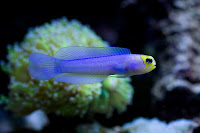 OILBIRD
OILBIRD
The oilbird, locally known as the guácharo, is a bird species found in the northern areas of South America including the island of Trinidad. It is the only species in the genus Steatornis and the family Steatornithidae.
COLORFUL TOUCAN
 Toucans are members of the Neotropical near passerine bird family Ramphastidae. The Ramphastidae are most closely related to the American barbets. They are brightly marked and have large, often-colorful bills. The family includes five genera and over forty different species.
Toucans are members of the Neotropical near passerine bird family Ramphastidae. The Ramphastidae are most closely related to the American barbets. They are brightly marked and have large, often-colorful bills. The family includes five genera and over forty different species.MANDARIN DUCK
The mandarin duck is a perching duck species native to East Asia. It is medium-sized, at 41–49 cm long with a 65–75 cm wingspan. It is closely related to the North American wood duck, the only other member of the genus Aix.
 LONG TAILED WIDOWBIRD
LONG TAILED WIDOWBIRD
The long-tailed widowbird, also known as the "Sakabula", is a species of bird in the family Ploceidae. The species are found in Angola, Botswana, the DRCongo, Kenya, Lesotho, South Africa, Swaziland, and Zambia. The long-tailed widowbird is a medium-sized bird and one of the most common in the territories it inhabits.
 BARN OWL
BARN OWL
The barn owl is the most widely distributed species of owl and one of the most widespread of all birds. It is also referred to as the common barn owl, to distinguish it from other species in its family, Tytonidae, which forms one of the two main lineages of living owls, the other being the typical owls.
MACAWS
Macaws are long-tailed, often colorful, New World parrots. They are popular in aviculture or as companion parrots, although there are conservation concerns about several species in the wild.
 LYREBIRD
LYREBIRD
A lyrebird is either of two species of ground-dwelling Australian birds that compose the genus Menura, and the family Menuridae.






















